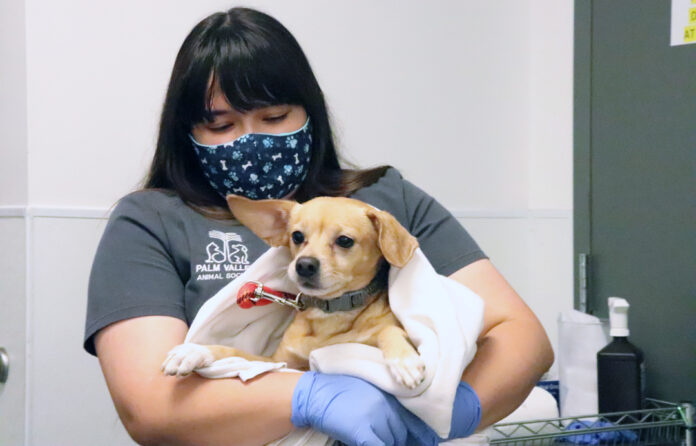The Palm Valley Animal Society in Edinburg has been a no-kill shelter since April, but the recent surge of kittens and puppies being turned into the center makes it difficult for the organization to hold that status, its executive director said.
For the past several weeks, the shelter has been receiving about 30 to 50 kittens a day, said Donna Casamento, who moved to the Rio Grande Valley from her home state Missouri in April to take on the position as PVAS’ executive director.
About 700 kittens, she said, are in the center’s care — its maximum capacity for kittens.
She added that as many as 40 puppies are also available to be adopted.
PVAS was able to reach a no-kill status with the collaboration of the community, so Casamento is asking the region to continue supporting them in their mission to care for all citizens of the Rio Grande Valley, “even the four legged ones.”
To meet the standard of being a no-kill shelter, which means maintaining a 92% save rate, Casamento said PVAS relaxed its adoption process.
“We really looked at ourselves and said, ‘why are we making our adoption process so difficult?’” she said. “We found that by reducing all those barriers and taking down those walls, we got great people coming in to adopt animals and having wonderful outcomes.”
The shelter recorded its lowest intake in April of 374 animals, fewer than half of the average monthly intake in 2019, which was more than 1,000.
However, PVAS has seen a recent swell in the number of animals being turned in. Last month, the organization took in 1,168 animals.
Casamento emphasized that the shelter is proud of its no-kill status, but without the help of the community — whether it’s through spay and neuter efforts, adopting and fostering animals, or donations for their operations — they could have to resort to euthanizing.
“It’s not humane, euthanasia,” she said. “Some people don’t even call it euthanasia when you are euthanizing healthy dogs and cats, and I would agree with that. It’s difficult to use the other word that goes along with that when you are talking about population control.
“But in reality, euthanasia is a very inexpensive means of managing a population. When you look at the cost per day per animal, when you have an animal three days versus two to three weeks, your cost of care goes up considerably during that time period. So it is more expensive to save lives than anything other options that are available to you in sheltering, but it is a gift to be able to do it.”
The root of the problem, Casamento said, is the lack of available spay and neutering programs, which PVAS is currently in the process of developing.
“When you look at a lot of communities that are doing a great job with spay neuter and doing community cat programs, they’re going to see the puppies and kittens diminish and go down and not be available at the shelters,” she said.
In most cases, people turn in their pets to the center because they have to, not because they want to, Casamento said. Some of the reasons include the inability to afford to feed them or pay their medical bills.
To address the former problem, PVAS has a pet food pantry available, and for the latter, Casamento said she hopes to open a medical fund someday.
“Those are just financial resources that we have to figure out a way as an organization and community to have available to help keep animals in the homes,” she said. “To keep them with the people that love them.”
The recent surge of animals coming into the shelter has added some stress to the operations of PVAS, but Casamento said they will not stop trying to care for each one.
“It’s a great thing to be able to do for the community,” she said. “It’s an important thing, and it’s something that we should all strive for — for every community to strive to be a no-kill community because it’s the right thing to do.”




